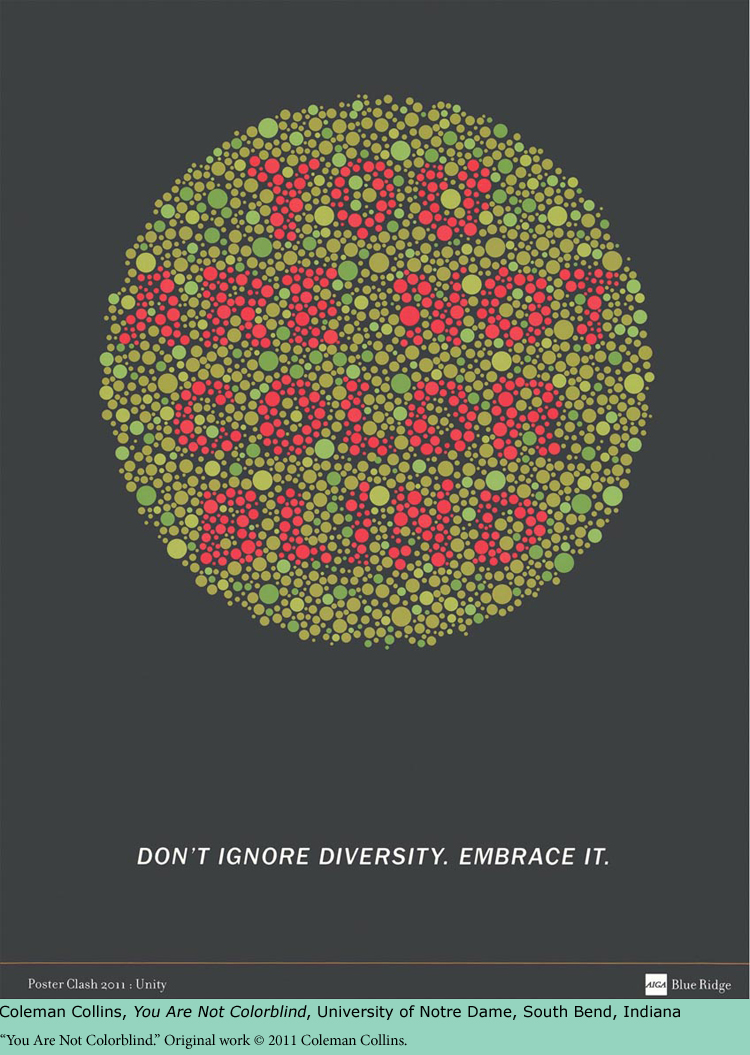University of Notre Dame, You Are Not Colorblind
University of Notre Dame, You Are Not Colorblind

RESPOND •
Which of these visual arguments do you find most appealing? Least appealing? Why? (Chapter 14 on visual rhetoric may prove useful here.)
Analyze the relationship between text (the words used) and the visual images and layout in each of the posters. What’s the interaction between the text, on the one hand, and the visual images and layout, on the other, in each one? Which poster is most effective in this regard? Why?
If you take each of these posters to be a definitional argument, defining diversity in some way, what argument is each making? In other words, how does each poster define diversity? (For a discussion of definitional arguments, see Chapter 9.)
In defining and commenting on the notion of diversity, these posters range from approaching the topic in a didactic fashion (that is, seeking to teach a moral lesson) to approaching it much more vaguely. (Note the evaluative — and potentially negative — connotations the labels “didactic” and “vague” carry.) Choose the posters that you find most explicitly didactic and those that you find vaguer in their approach to the topic. Justify your choices. Which approach do you prefer? Why? Which do you believe is more effective in situations like this one? Why?
Write an essay in which you evaluate two of these posters, commenting on the definition of diversity presented or assumed (question 3); the relationship between text, on the one hand, and visual images and layout, on the other (question 2); and the artists’ approach to the subject (question 4). (For a discussion of evaluative arguments, see Chapter 10.)
Write a definitional essay in which you define the notion of diversity as it might or should be understood on American college campuses today in general or on your campus specifically. (For a discussion of definitional arguments, see Chapter 9.)